- The history background:
The 17th dynasty back to the 2nd intermediate period in the ancient Egyptian history. The kings ruled in upper Egypt at this period. Some mainstream scholars have suggested that the Seventeenth dynasty of Egypt had Nubian ancestry due to the expanded presence of Nubians in Egypt during that time and the craniofacial evidence from X-ray examinations of some members of this dynasty such as Seqenenre Tao and Tetisheri who displayed strong affinities with contemporary Nubians as the Hyksos ruled the lower Egypt in the same time. The last two kings of the dynasty opposed the Hyksos rule over Egypt and initiated a war that would rid Egypt of the Hyksos kings and began a period of unified rule, the New Kingdom of Egypt.
- 1- RAHOTEP
Rahotep is known from a stele found at Coptos reporting the restoration of the temple of MIN.
The explain of the stele: A limestone stele which shows Rahotep making an offering to Osiris for two deceased, an officer and a priest. The stela appears to have been made at a workshop at Abydos. Other stelae produced by this workshop belong to king Sekhemrekhutawy Pantjeny and king Wepwawetemsaf. All three kings reigned therefore quite close in time.
 |
| Rahotep (raising arms) while offering to Osiris. Stele BM EA 833, drawn by Wallis Budge. |
- 2- SOBKEMSAF I
It is unknown whether SOBKEMSAF was a son of RAHOTEP. However, a temple-inscription indicates the SOBKEMSAF I was the father of INYOTEF V, thus making INYOTEF V, VI the sons of SOBKEMSAF I , Sobekemsaf I is attested by a series of inscriptions mentioning a mining expedition to the rock quarries at Wadi Hammamat in the Eastern Desert during his reign.
- 3- INYOTEF V
(sometimes Intef V) was an Ancient Egyptian pharaoh of the 17th Dynasty of Egypt, who lived late during the Second Intermediate Period, when Egypt was divided into two by controlled Lower Egypt and Theban ruled Upper Egypt.
- 4- INYOTEF VI
(sometimes referred to as Intef VI) was an Egyptian king of the 17th Dynasty of Egypt at Thebes during the 2nd Intermediate Period, when Egypt was divided by Hyksos rival dynasties including the in Lower Egypt. Nubkheperre Intef ruled from Thebes, and was buried in a tomb in the necropolis of Dra' Abu el-Naga'. The grave was originally covered with a small pyramid (approximately 11 m at the base, rising to a height of approx. 13 m.) Auguste Mariette found two broken obelisks with a complete Fivefold Titulary, which was then subsequently lost when being transported to the Cairo Museum.
 |
| The stela depicting Nubkheperre and Nakht, from Abydos |
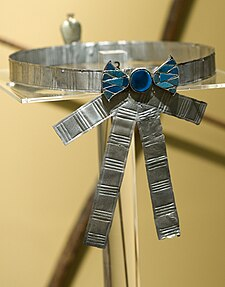 |
| A royal crown believed to have originated from Nubkheperre Intef's Dra' Abu el-Naga' tomb now located in the Rijksmuseum van Oudheden of the Netherlands. |
- 5- INYOTEF VII
(sometimes Intef VII) Ruled Upper Egypt from Thebes during the late 2nd Intermediate Period. The short reign suggests that he met a violent end.
 |
Cartouche of Sekhemre-Heruhirmaat Intef or Intef VIII, detail of a limestone block from Koptos And Rishi coffin of Sekhemre-Heruhirmaat Intef, on display at the Louvre |
- 6- SOBKEMSAF II
He was an Egyptian king of the 17th Dynasty of Egypt at Thebes during the 2nd Intermediate Period, when Egypt was fragmented and ruled by multiple kings. His throne name, Sekhemre Shedtawy, means "Powerful is Re; Rescuer of the Two Lands." It is now believed by Egyptologists that Sobekemsaf II was the father of both Sekhemre-Wepmaat Intef and Nubkheperre Intef based on an inscription carved on a doorjamb discovered in the ruins of a 17th Dynasty temple at Gebel Antef in the early 1990s which was built under Nubkheperre Intef. The doorjamb mentions a king Sobekem[saf] as the father of Nubkheperre Intef/Antef VII--(Antef begotten of Sobekem...) He was likely the Prince Sobekemsaf who is attested as the son and designated successor of king Sobekemsaf I on Cairo Statue CG 386.According to the Abbott Papyrus and the Leopold-Amherst Papyrus, which is dated to Year 16 of Ramesses IX, Sekhemre Shedtawy Sobekemsaf was buried along with his chief Queen Nubkhaes (II) in his royal tomb. The German Egyptologist Daniel Polz, who rediscovered Nubkheperre Intef' s tomb at Dra Abu el Naga', strongly maintains that Nubkheperre Intef ruled very late in the 17th Dynasty.
 |
| Sitting statuette of Sobekemsaf II, from Thebes. |
- 7- TAA I
 |
| Lintel bearing Senakhtenre's cartouches, from Karnak |
( Senakhtenre Ahmose), Senakhtenre reigned for a short period over the Theban region in Upper Egypt. Most probably he is the father of TAA II he is generally believed to have been a member of the family of Ahmose and as such identified with the otherwise unidentified spouse" of Queen Tetisheri, Ahmose's grandmother. He was succeeded by his son, Seqenenre Tao. King Senakhtenre would also be the husband of Tetisheri who is called the "great king's wife" and "the mother of my mother" in a stela at Abydos by pharaoh Ahmose I. Senakhtenre was, therefore, the grandfather of Ahmose I.
- 8- TAA II
Seqenenre Tao (also Seqenera Djehuty-aa or Sekenenra Taa, called 'the Brave') ruled over the last of the local kingdoms of the Theban region of Egypt. He probably was the son and successor to Senakhtenre Ahmose and Queen Tetisheri. The dates of his reign are uncertain, With his queen, Ahhotep I, Seqenenre Tao fathered two pharaohs, KAMOSE, his immediate successor who was the last pharaoh of the 17th Dynasty, and Ahmose I who, following a regency by his mother, was the first pharaoh of the Eighteenth. Seqenenre Tao is credited with starting the opening moves in a war of revanchism against Hyksos incursions into Egypt, which saw the country completely liberated during the reign of his son Ahmose I. The tradition took the form of a tale, nowadays called "The Quarrel of Apophis and Seqenenre", in which the Hyksos king Apepi sent a messenger to Seqenenre in Thebes to demand that the Theban hippopotamus pool be done away with, for the noise of these beasts was such that he was unable to sleep in far-away Avaris. Perhaps the only historical information that can be gleaned from the tale is that Egypt was a divided land, the area of direct Hyksos control being in the north, but the whole of Egypt paying tribute to the Hyksos kings. Seqenenre Tao participated in active diplomatic posturing, which went beyond simply exchanging insults with the Asiatic ruler in the North. He seems to have led military skirmishes against the Hyksos and judging from the vicious head wounds on his mummy in the Egyptian Museum in Cairo, may have died during one of them. His son and successor Wadjkheperre Kamose, the last ruler of the 17th Dynasty at Thebes, is credited with launching a successful campaign in the Theban war of liberation against the Hyksos, although he is thought to have died in the campaign. His mother, Ahhotep I, is thought to have ruled as regent after the death of Kamose and continued the warfare against the Hyksos until Ahmose I, the second son of Seqenenre Tao and Ahhotep I, was old enough to assume the throne and complete the expulsion of the Hyksos and the unification of Egypt.
 |
| The Mummy of King Seqenenre Tao |
- 9- KAMOSE
Kamose was the last Pharaoh of the Theban Seventeenth Dynasty. He was possibly the son of Seqenenre Tao and Ahhotep I and the brother of Ahmose I, founder of the 18th Dynasty. His reign fell at the very end of the 2nd Intermediate Period. Kamose is usually ascribed a reign of three years (his highest attested regnal year), although some scholars now favor giving him a longer reign of approximately five years. His reign is important for the decisive military initiatives he took against the Hyksos, who had come to rule much of Ancient Egypt. His father had begun the initiative and lost his life in battle with the Hyksos. It is thought that his mother, as regent, continued the campaigns after the death of Kamose, and that his full brother made the final conquest of them and united all of Egypt.


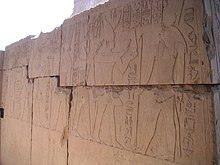
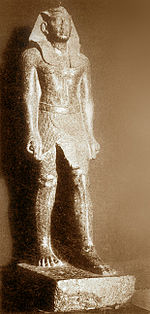




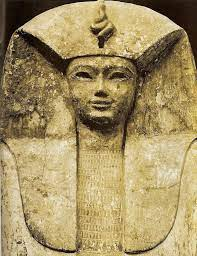


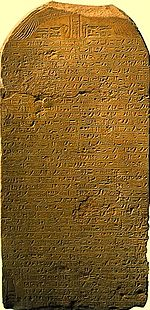




0 Comments
For questions and opinions, please leave a comment.